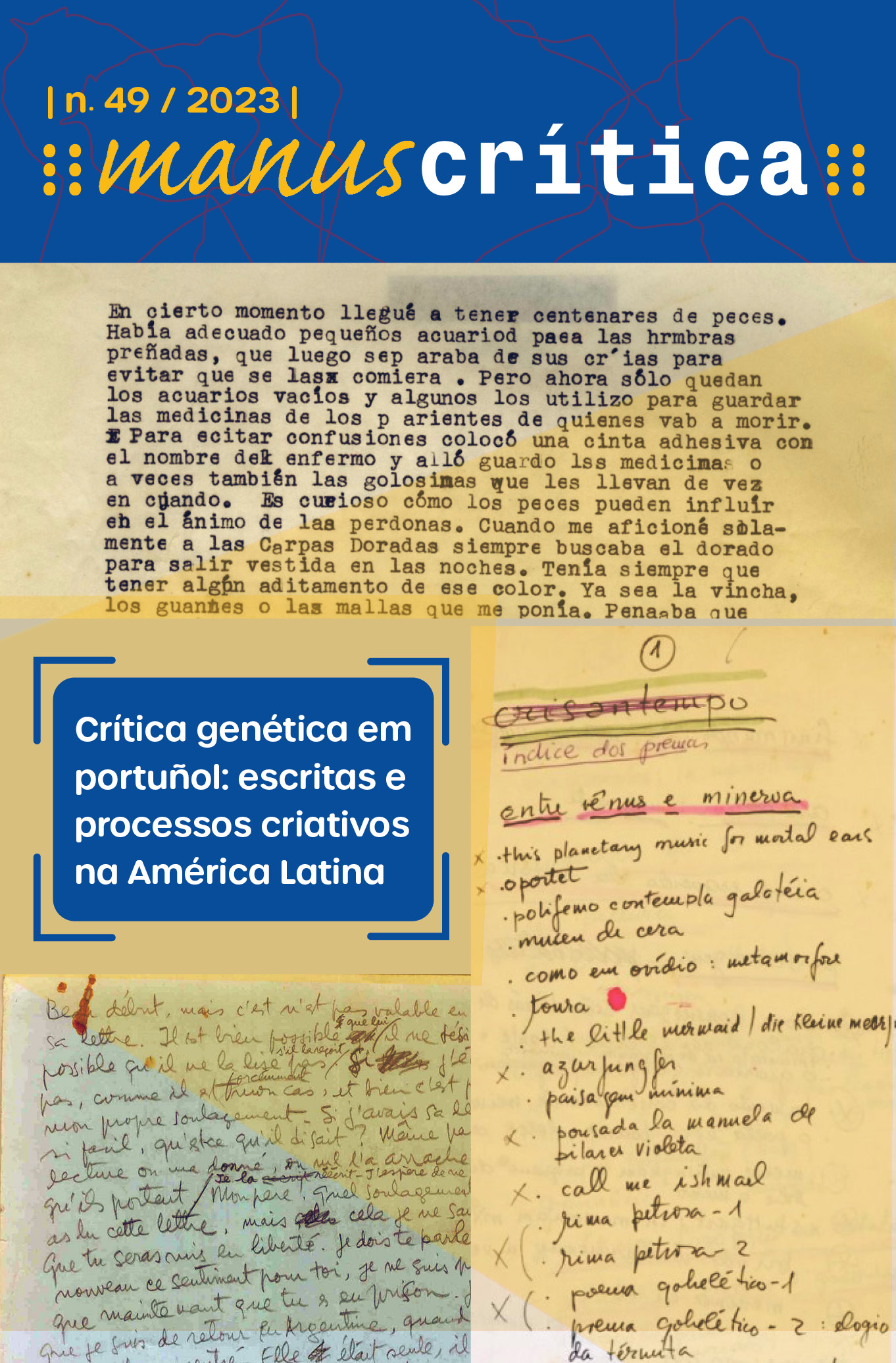The impact of writing on the author: the algorithm, new name for style in forming manuscripts
DOI:
https://doi.org/10.11606/issn.2596-2477.i49p193-206Keywords:
Neuroscience, Artificial intelligence, Sloterdijk, Psychoanalysis, NietszcheAbstract
If writing is regarded as a real exercise close to athletics, it will have repercussions both on the writer's brain and on his way of writing. At first, I will recall the observations of neuroscientists Stanislas Dehaene (Les neurones de la lecture, 2007), Boris Cyrulnik (Des âmes et des saisons, 2020) and Yann Le Cun (Quand la machine apprend, 2019) on the changes in the areas of neurons according to the activities of each. Such as the writer when he writes and scribes. Secondly, I will highlight the exemplary physical endurance of artists and writers comparable to that of our best athletes, which requires prolonged training and a certain asceticism. Thus, according to Peter Sloterdijk, regarding the artist-acrobat of Zarathustra, the artist and the writer replace God and the kings in providing the answers to the great questions. Finally, the position of the German philosopher on psychoanalysis will be discussed – according to him, a person no longer owns their decisions. Contrary to Freudian theory, Sloterdijk supports the “subversion from above” when the artist and the writer, relying on the archives (Foucault) that preceded them, aim at the “impossible”, and the “multivirtuoso” to climb the mountain of the unlikely (Le palais de cristal, À l'intérieur du capitalisme planétaire, 2015).
Downloads
References
ALAVOINE, B. Quem conta a história em Simenon? Originalidade do jogo com voz e ponto de vista. Cahiers de narratologie, 10 de janeiro de 2001.
AUBERT, N. Proust et Bergson : La mémoire du corps. Revue de littérature comparée, 2011/2 (n°338), p. 133-149. https://www.cairn.info/revue-de-litterature-comparee-2011-2-page-133.htm
CYRULNIK, B. Des âmes et des saisons. Paris: Odile Jacob, 2020.
DAWKINS, R. A escalada do monte improvável. São Paulo, Companhia das Letras, 1998.
DEHAENE, S. Les neurones de la lecture. Paris: Odile Jacob, 2007.
DIAMANKA, S. Habitant de nulle part, originaire de partout. Paris: Points, 2021.
FOUCAULT, M. L’archéologie du savoir. Paris, Gallimard, 1969.
HANDKE, P. “Peter Handke 1/2, l’écriture, cette inconnue”. Disponível em https://www.radiofrance.fr/franceculture/podcasts/la-grande-table/peter-handke-1-2-l-ecriture-cette-inconnue-7558509, acesso em 2 de março de 2020.
JUNCKER, F. Entre sciences et lettres, le silence au fil des géométries (tese HDR). Nice, Universidade de Nice-Côte d’Azur, 2022.
LE CUN, Y. Quand la machine apprend. Paris : Odile Jacob, 2019
MAURO, F., Às margens do Vivonne, o estilo de Marcel Proust nos romances de Pedro Nava, Jorge Andrade e Cyro dos Anjos. São Paulo, FFLCH, 2022 (tese inédita).
NIETZSCHE, F. Ainsi parlait Zarathoustra. Paris: Gallimard, 1947.
PROUST, M. O tempo redescoberto. Tradução de Lúcia Miguel Pereira. São Paulo, Globo, 2013.
ROMAN: La méthode Simenon. csaintonge's Blog. Disponível em: https://csaintonge.wordpress.com/2013/03/16/roman-la-methode-simenon/. Acesso em 1º de julho de 2023.
SAPIRO, G. Peut-on dissocier l’œuvre de l’auteur ?. Paris: Seuil, 2022.
SARAMAGO, J. O autor como narrador. Revista Ler, n. 38, Primavera/ Verão de 1997.
SLOTERDIJK, P. Le palais de cristal, À l’intérieur du capitalisme planétaire. Paris, Pluriel, 2010.
SLOTERDIJK, P. Tu dois changer ta vie. Paris, Fayard, 2015
SOARES, M. Gênesis. São Paulo: Ed. Paulinas, 1955.
SÓFOCLES. Antigone. Tradução de Paul Mazon e Philippe Willemart. Paris: Gallimard, 1962,
SÓFOCLES. Antígona. Tradução de Donald Schüler, São Paulo, L&MP Pocket, 1999.
WILLEMART, P. A Escritura pela Rasura: A Crítica Genética em Busca de Outros Saberes. São Paulo: Perspectiva, 2022.
Downloads
Published
Issue
Section
License
Copyright (c) 2023 Philippe Leon Marie Willemart

This work is licensed under a Creative Commons Attribution 4.0 International License.













